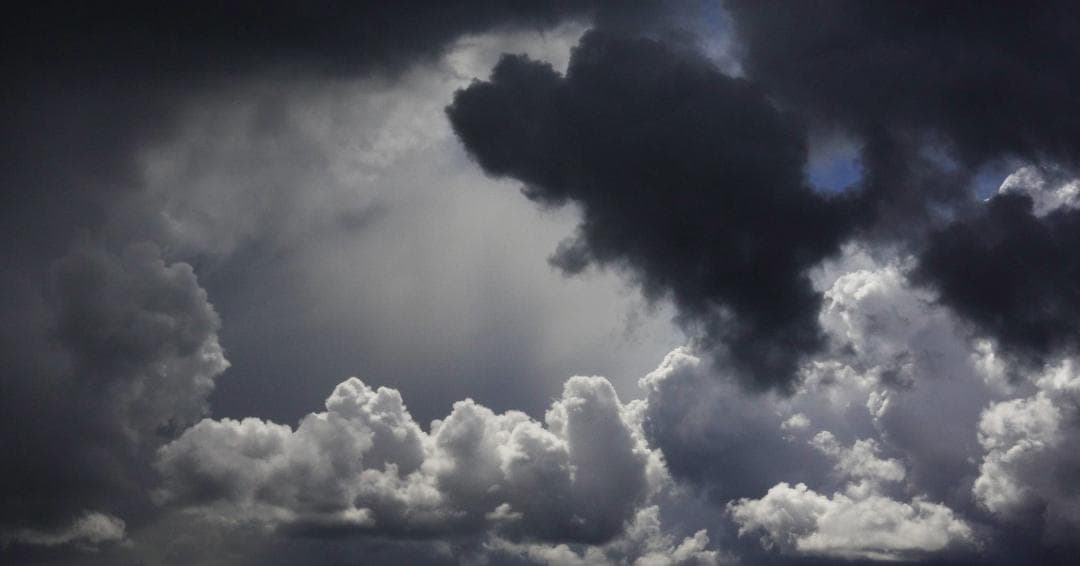
How will the clouds above us look in the future?
Published:
Artificial intelligence can now be trained to predict how the cloud coverage will change as the climate shifts.
This article was originally published at oslomet.no in Norwegian. It’s been translated using ChatGPT technology and has been reviewed and edited by a communications advisor to secure quality and accuracy.
A warmer climate could alter the type of cloud cover we experience, which in turn can impact the climate.
Low, heavy clouds reflect a lot of sunlight and can have a cooling effect on the climate, whereas thin clouds at high altitudes can capture heat radiation from the earth, leading to warming.
There is a great deal of uncertainty around how cloud formation will change with a warmer climate and how much of the sky they will cover.
Changes in cloud cover can influence global warming, which in turn affects crucial resources such as agriculture and solar energy.
Machine learning makes it easier to predict cloud cover
Researchers from OsloMet, SimulaMet and the University of Oslo have developed a dataset that can use machine learning to identify correlations between cloud cover over Europe and air temperature, air pressure, and humidity.
This could provide better forecasts of what could happen to the climate and cloud cover in the future.
"To our knowledge, this is the first dataset that use machine learning to predict cloud cover," says Professor Hugo Hammer from OsloMet and SimulaMet.
The dataset consists of satellite observations of cloud cover, as well as observations of air temperature, air pressure, and humidity.
The researchers propose a new technique that can link satellite observations, air temperature, air pressure, and humidity to specific geographic areas.
A challenge is that satellites observe different parts of the Earth's surface at different angles. This means that the resolution varies, and this technique compensates for that.
This is particularly true for observations of cloud cover towards the poles, which have lower resolution, while the best resolution and most observations are around the equator.
First to predict future cloud formations
Hammer sees many exciting issues related to machine learning and statistical methods in climate research and weather forecasting.
Machine learning, especially deep learning, has so far been less used in climate research compared to, for example, weather forecasting.
The work to create Europe's first dataset to predict cloud cover stems from a master's project, where Hugo Hammer, Michael Riegler and Trude Storelvmo supervised master's student Hanna Svennevik at the University of Oslo.
"If we use a good climate model as a starting point, we can use our dataset to predict the degree of cloud cover in the future.”
"For example, if a climate model gives us estimates for temperature, air pressure, and humidity in 2060, we give this input to a model trained on our dataset to say something about the degree of cloud cover in 2060.”
A similar example could be that if the climate model simulates until the year 2100, one can take modelling of temperature, air pressure and humidity for the year 2100, put that into the trained model, and make a prediction of cloud cover in the year 2100.
"We can't necessarily say how pressure and temperature affect clouds, but to what degree different values of them occur simultaneously with certain types of cloud formation.”
Machine learning uncertainties
"We can then learn that there are covariations between temperature, air pressure and humidity on the one hand and cloud cover on the other.”
Covariation then means that certain values of temperature, air pressure and humidity occur simultaneously with certain types of cloud cover.
"However, our dataset is based on historical data. If the climate changes in the future, the relationship between temperature, air pressure, humidity and cloud cover may also change. This could make a machine learning model trained on the historical data less accurate.”
A weakness with machine learning is that when you input data that is slightly outside and different from what was used when the model was trained on these data, it becomes more uncertain. It then becomes more difficult for the model to predict what is going to happen.
If, for example, you train the model with temperatures of 16 to 30 degrees, and then suddenly input 40 degrees to the model, it will still predict the cloud cover. But it will be less reliable, because we had no data to train on how the cloud cover behaves at 40 degrees.
The predictions will therefore always be somewhat uncertain. At the same time, the researchers' dataset could contribute to better predictions, as it provides more knowledge about what temperature, humidity and air pressure can mean.
Temperature appears to be the most important value
"So what so far seems to be most important for predicting cloud cover?”
"Temperature appears to be most important. And then comes humidity in second place, and air pressure in third.”
Temperature is important for several reasons. Firstly, clouds form when moist air cools. Secondly, the temperature determines how much water vapour the air can contain. Thirdly, the temperature at different heights in the atmosphere affects cloud formation.
Clouds also have a high degree of humidity, and cloud cover is closely linked with air pressure, as clouds often form in areas of low pressure.
However, the relationship between these is complex and influenced by a range of factors.
Working with limited areas
“Why have you limited yourselves to Europe?”
“It's very common to restrict oneself to a limited geographical area. Weather and climate can vary greatly in different parts of the world, and many issues arise if you want to do it globally. So, it's common to focus on just one area," says Hugo Hammer, who recommends other researchers to use the dataset.
Scientific article
Hanna Svennevik, Steven A. Hicks, Michael A. Riegler, Trude Storelvmo and Hugo L. Hammer: A dataset for predicting cloud cover over Europe. Scientific Data 11, Article number 245 2024 (nature.com).
Photo: Thorfinn Bekkelund/Samfoto
